
Just to let you know that this month’s expert live chat will be taking place on 29th April at 11pm UK time
[Read More...]
Just to let you know that this month’s expert live chat will be taking place on 29th April at 11pm UK time
[Read More...]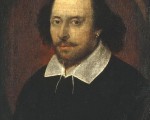
Sunday is the anniversary of the death of William Shakespeare in 1616 and possibly his birth in 1564, so is seems fitting for Claire to do a talk on him and to also share other resources on the Bard.
[Read More...]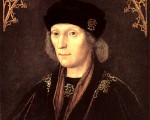
At 11 o’clock on the night of 21st April 1509, King Henry VII died at Richmond Palace. It was not a sudden death, the king had been ill for some time and had shut himself away at Richmond since January.
John Fisher, the future Bishop of Rochester, recorded details of Henry VII’s last days for a sermon. The king died a good Christian death but his last days were far from peaceful, they involved confession, prayer, weeping and a dying man trying to bargain with God, pleading with God that he would be a changed man if God sent him life. Fisher writes of how he received the sacrament of penance “with a marvellous compassion and flow of tears, that at some time he wept and sobbed by the space of three quarters of an hour.”
[Read More...]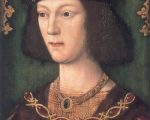
On the 21st April 1509, following the death of his father, Henry VII, seventeen-year-old Henry VIII became king. His accession was greeted with joy. The Spanish envoy Gutierre Gómez de Fuensalida wrote that “The people are very happy and few tears are being shed for Henry VII. Instead, people are as joyful as if they had been released from prison” and William, Lord Mountjoy, wrote to Desiderius Erasmus, the renowned humanist and scholar, saying:
[Read More...]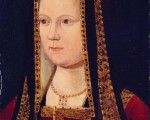
“Why did I limit myself to 60 seconds?” I keep asking myself! It’s so tricky to do any justice at all to these Tudor people in that time, but I hope that these videos do give people enough basic information to make them want to find out more.
[Read More...]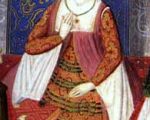
Thank you to regular contributor Heather R. Darsie for writing this introduction to the women of the House of Trastámara.
When thinking about the important players of the Renaissance, particularly during the reign of Henry VIII of England, one recalls the powerful families of the English Tudors, French Valois, and Burgundian Habsburgs. The family that is even more influential, even if quietly, is the overlooked Trastámaras of Spain. This family married into the Tudor, Valois, and Habsburg families, among others, and its reach was far. Who were they?
[Read More...]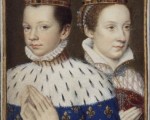
On this day in history, Tuesday 19th April 1558, fifteen-year-old Mary, Queen of Scots, became betrothed to fourteen-year-old Francis, the dauphin of France, the future Francis II.
[Read More...]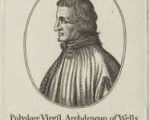
On this day in history, 18th April 1555, Polidoro Virgili (Polydore Vergil or Virgil), the Italian humanist scholar and historian, died at Urbino. He was buried in the Chapel of St Andrew in the Duomo in Urbino. Virgil has been called the “Father of English History”, and his famous works include De inventoribus rerum and the Anglica Historia.
[Read More...]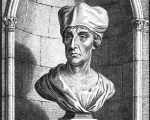
Today is the anniversary of the death of John Leland, the Tudor poet and antiquary, on 18th April 1552. He died in the parish of St Michael le Querne, Cheapside, London, and was buried there. In 1547, Leland “fell besides his wits” and in 1551, his brother was granted custody of him and his possessions. Leland is known for the notebooks of his travels around England and Wales, which were published as “The Itinerary of John Leland the Antiquary” by Thomas Hearne.
[Read More...]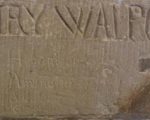
On this day in history, 17th April 1595, Henry Walpole, the Jesuit martyr, was hanged, drawn and quartered in the city of York. Walpole had been accused of treason on three counts: that he “had abjured the realm without licence; that he had received holy orders overseas; and that he had returned to England as a Jesuit priest to exercise his priestly functions”. Walpole was beatified in 1929 and canonised in 1970 by Pope Paul VI.
[Read More...]
17th April:
1534 – Sir Thomas More, Henry VIII’s Lord Chancellor, was sent to the Tower of London after refusing to swear the “Oath of Succession”.
1554 – Sir Nicholas Throckmorton was acquitted of treason for being involved in Wyatt’s Rebellion. The jurors were arrested straight after the trial and Throckmorton remained in prison until January 1555.
1554 – Thomas Wyatt the Younger’s head was stolen in the rejoicing after Throckmorton’s acquittal.

In Tudor times, on Easter Sunday, the candles in the church and around the Easter sepulchre were extinguished, and then the church lights were re-lit by the priest, from a fire. The sepulchre was opened, and Christ’s resurrection was celebrated with a special mass.
[Read More...]
This week’s Sunday quiz is an Easter-themed crossword. I’ve done it as a 2-page printable PDF but don’t look at the second page as it’s the solution!
[Read More...]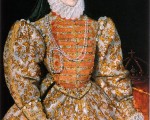
I know that many of you enjoy our informal live chat sessions where we all discuss a certain topic or person, so I thought I’d schedule one for Saturday 22nd April. The topic for this one is going to be Elizabeth I. I know that’s a very broad topic but I’m happy to schedule further more specific chats on aspects of her life and reign as follow-ups to this one. Let’s go broad this time.
[Read More...]
In this week’s Claire Chats video, Claire gives some tips on how to go about researching specific Tudor people and what sources you can use.
[Read More...]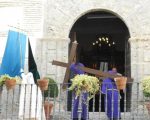
Today is Good Friday and I will miss the procession in my village today because we’re off to see the Passion play in another village, but I know that some of you enjoy the photos I share of feast days and processions here so I thought I’d share these photos from a few years ago.
[Read More...]
Today is Good Friday, the day that commemorates the crucifixion of Jesus Christ, so I’d like to share the Claire Chats video I made last year on how Good Friday was marked in Tudor times. I’m also reposting the information I shared with it.
[Read More...]
James Hepburn, 1st Duke of Orkney, 4th Earl of Bothwell and the third husband of Mary, Queen of Scots, was the son of Patrick Hepburn, 3rd Earl of Bothwell and Lord High Admiral, known as the “Fair Earl”, and his wife Agnes Sinclair, daughter of Henry Sinclair, 3rd Lord Sinclair. In 1556, on his father’s death, James became 4th Earl of Bothwell and Lord High Admiral of Scotland.
In 1559/1560 Bothwell visited Denmark on the way to France and met Anna Throndsen (Anne Thorssen). He is alleged to have seduced and even married Anne but deserted her. In 1566, he married Jean Gordon, second eldest daughter of George Gordon, Earl of Huntly, but the marriage was not a happy one, as Jean accused Bothwell of adultery with her maid and seamstress, Bessie Crawford. The marriage was annulled in May 1567 on the grounds of consanguinity. Eight days after the divorce, Bothwell married Mary, Queen of Scots.
[Read More...]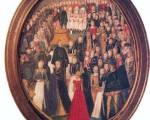
Maundy Thursday commemorates the Last Supper, that final meal that Jesus Christ had with his disciples before his arrest.
In Tudor times, on Maundy Thursday, the church was prepared for Easter with water and wine being used to wash the altars and it was traditional for people to go to confession. The three holy oils – the chrism oil, the oil of catechumens and the oil of the sick – were also blessed on this day.

On this day in history, 11th April 1554, Sir Thomas Wyatt the Younger was beheaded and then his body quartered for treason, for leading Wyatt’s Rebellion against Queen Mary I.
Wyatt had already shown his opposition to Mary when he supported Lady Jane Grey’s claim to the throne after the death of Edward VI – he escaped punishment that time – but he felt compelled to act when he found out about Mary I’s plans to marry King Philip II of Spain.
[Read More...]
I often think that living in Spain, a Catholic country, brings me that bit closer to life in Tudor England because their religious calendar – with all of its feast days, fasting, religious processions etc. – is still followed in countries like Spain today and whole villages and towns join in.
I realise that festivals like Holy Week and Easter are still celebrated or commemorated by Christians all over the world, but in countries like the UK Holy Week is no longer a week-long festival celebrated by everyone. Mostly, it’s time to have a holiday and exchange cards and Easter eggs. Here in Spain, there are processions on days like Palm Sunday, Maundy Thursday, Good Friday and Easter Sunday, in every town and village, however small. Everyone gets involved in “Semana Santa”. It’s a big deal! A huge deal! And so it was in Tudor times, where daily life was tied to the religious calendar.
[Read More...]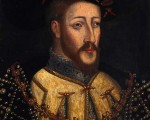
On this day, 10th April…
1512 – James V, King of Scotland, was born at Linlithgow Palace. He was the fourth child of James IV and Margaret Tudor, sister of Henry VIII. He was the only one of James and Margaret’s children to survive childhood, and so inherited the crown of Scotland when his father was killed at the Battle of Flodden, 9th September 1513.
1550 – Edward Seymour, Duke of Somerset, was re-admitted into Edward VI’s council.
1559 – Death of Sir Rice Mansel, soldier and administrator, at his home in Clerkenwell. He served Henry VIII as Vice-Admiral in 1542, in France and Scotland, and in 1544 as Knight-Marshal. He was also Chamberlain of Chester.
1585 – Death of Pope Gregory XIII, the Pope known for his introduction of the Gregorian Calendar, in Rome. He was succeeded by Pope Sixtus V.
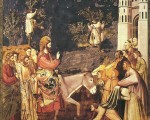
Palm Sunday is the sixth Sunday of Lent and marks the start of Holy Week. It commemorates the triumphal entry of Jesus Christ into Jerusalem on a donkey the week before the Resurrection. It is an event which features in the Gospels of Matthew, Mark, Luke and John, and here it is from John:
[Read More...]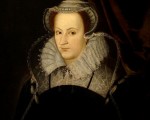
Today’s quiz is another general Tudor history quiz so grab a coffee and a snack and enjoy testing yourself on your Tudor knowledge with this fun quiz.
[Read More...]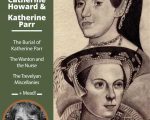
Thank you to those of you who spotted that there was an error in the layout of April’s Tudor Life magazine. Part of Conor Byrne’s article was hidden behind an image.
The magazine has been updated now and you can read it online or download it by going to the magazine page.
[Read More...]
On this day in history, 6th April 1590, Elizabeth I’s principal secretary, Sir Francis Walsingham, died at around the age of fifty-eight. Although he had served the queen for many years, he died in debt, as he had underwritten the debts of Sir Philip Sidney, his son-in-law.
Walsingham was an incredibly important man during Elizabeth I’s reign, being a statesman, private secretary, adviser, diplomat and spymaster, and he probably saved the queen’s life many times by uncovering various plots against her. Elizabeth called him her “Moor”.
[Read More...]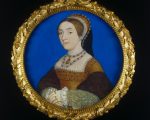
This month we have Gareth Russell, who is in the middle of a book tour of the USA as I write this post. He’s recorded us a wonderful talk about Catherine Howard, the fifth wife of Henry VIII.
[Read More...]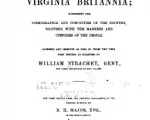
On this day in history, 4th April 1572, the writer William Strachey was born in Saffron Walden in Essex, England. He was the son of William Strachey and Mary Cooke. He was educated at Emmanuel College, Cambridge, and by 1605 had joined Gray’s Inn in London.
Strachey married his first wife, Frances Forster, in 1595 and had two sons by her, William and Edmund. Frances had died by 1615 and William took a second wife, a widow called Dorothy.
[Read More...]
On this day in history…
3rd April:
1538 – Death of Elizabeth Boleyn, Countess of Wiltshire and Ormond, wife of Thomas Boleyn and mother of Anne Boleyn. Click here to read more.
1559 – The second session of Parliament, in Elizabeth I’s reign, met after the Easter break. Its purpose was to obtain parliamentary sanction for royal supremacy and Protestant settlement.
1559 – The Peace of Cateau-Cambrésis, ending the Italian Wars, was signed between Henry II and Philip II of Spain. Click here to read more.
1578 – Burial of Lady Margaret Douglas, Countess of Lennox and daughter of Margaret Tudor and Archibald Douglas, 6th Earl of Angus. She was buried in Henry VII’s Chapel of Westminster Abbey.